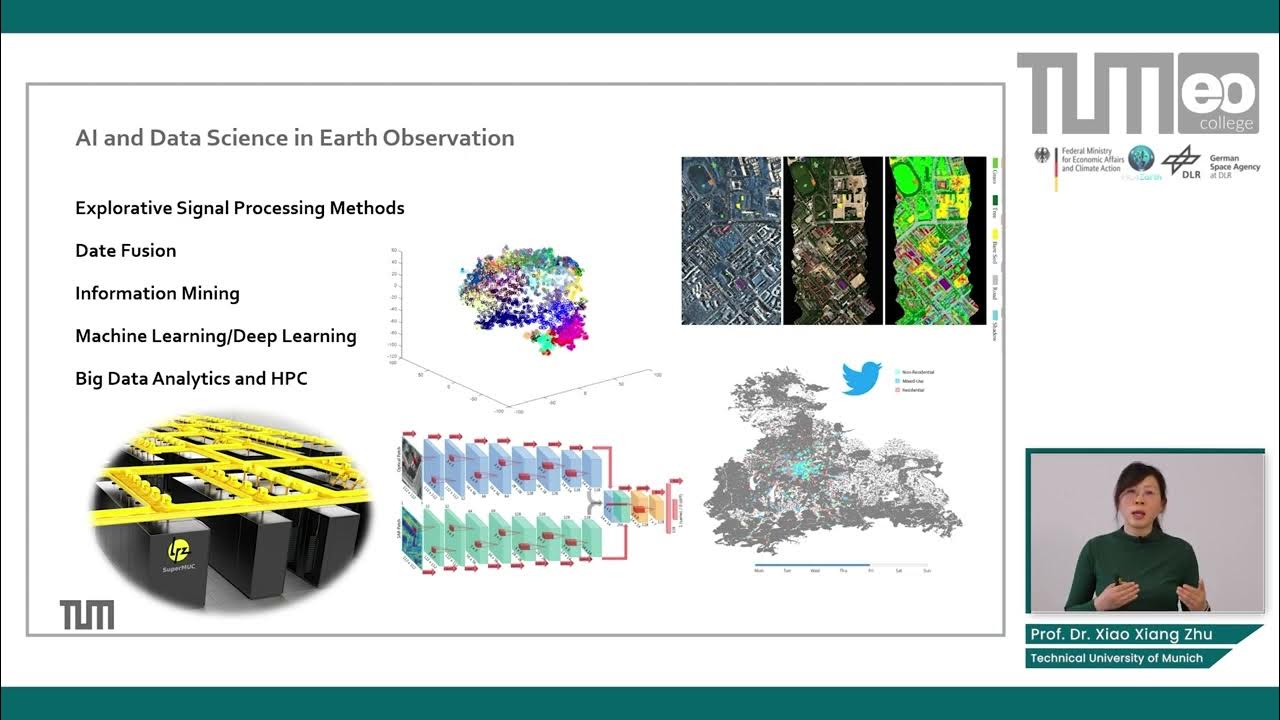Lec 01- Understanding the basics of AI in Marketing-I
Summary
TLDRThis course explores the integration of artificial intelligence in marketing across seven modules. It delves into AI's role in marketing strategy, research, customer engagement, brand building, and value communication. A case study of Ramco Cement illustrates AI's impact on advertising effectiveness. The course also examines marketing's evolution from focusing on product features to leveraging AI for data-driven strategies, emphasizing the importance of understanding both the technology and consumer needs in modern marketing practices.
Takeaways
- 📚 The course is divided into seven parts, each focusing on different aspects of AI in marketing, from basic introduction to ethics.
- 🚀 AI and analytics are transforming business practices, with AI enabling smart use of data and optimization of functions and processes.
- 🏭 Manufacturing is a major industry adopting AI massively, with a significant increase in AI usage over the past decade.
- 📈 Ramco Cement's case study illustrates how AI can change advertising effectiveness and improve business decision-making through data visualization.
- 🌐 Google Maps integration with Ramco ERP system at Madras Cement helped in visual analysis, identifying discrepancies, and developing business growth strategies.
- 📊 AI adoption in Madras Cement reduced penalties and improved consignment clearance time, demonstrating tangible business benefits.
- 🔍 Marketing is defined as the activity of institutions and processes for creating, communicating, delivering, and exchanging offerings of value.
- 🏢 Marketing offerings include a variety of types such as events, experiences, persons, properties, organizations, information, ideas, and services.
- 🌐 The marketing environment consists of the task environment and the broad environment, including demographic, economic, social cultural, national, technological, and political legal aspects.
- 🔄 Marketing has evolved from version 1 to version 5, driven by marketing technology and customer needs, with each stage having distinct philosophies, objectives, and practices.
Q & A
What are the main parts of the course on artificial intelligence and marketing?
-The course is divided into seven parts: 1) Introduction to AI in marketing management, 2) Developing marketing strategies and plans using AI, 3) AI for marketing research, 4) Connecting with customers, 5) Building strong brands using AI, 6) AI for designing, delivering, and communicating value, and 7) Ethics in AI.
What is covered in the first module of the course?
-The first module covers the basics of AI in marketing, including how AI is used by the industry, a case study, the definition of marketing, various marketing offerings, and the marketing environment and its components.
How has the use of AI in different industries evolved over the years?
-From 2015 to 2025, AI usage in healthcare increased from 37% to 40%, in transportation it remained at 41%, in manufacturing it rose from 14% to 83%, in finance from 41% to 59%, and in advertising it decreased from 47% to 36%.
What challenges did Madras Cement face before adopting AI?
-Madras Cement struggled with visualizing and leveraging data from their ERP system, understanding performance issues, and making quick business decisions due to the complexity of traditional reporting methods like Microsoft Excel.
What solution did Madras Cement implement to overcome their challenges?
-Madras Cement integrated Google Maps with their ERP system, allowing for rich data visualization and improved productivity. This solution helped in better monitoring, strategy development, and enhancing market penetration and competitiveness.
What is the definition of marketing according to the American Marketing Association?
-Marketing is the activity, set of institutions, and processes for creating, communicating, delivering, and exchanging offerings that have value for clients, customers, partners, and society at large.
What are the eight types of market offerings mentioned in the course?
-The eight types of market offerings are events, experiences, persons, properties, organizations, information, ideas, and services.
What constitutes the marketing environment?
-The marketing environment consists of the task environment, which includes actors like the company, suppliers, distributors, dealers, and target customers, and the broad environment, which includes demographic, economic, social-cultural, natural, technological, and political-legal environments.
How has marketing evolved over the years according to Philip Kotler?
-Marketing has evolved from Marketing 1.0, focused on product features and functionality, to Marketing 2.0, which emphasizes customer relationships and the use of Web 2.0 tools, and Marketing 3.0, which integrates technology with a focus on emotional and social aspects to create value-driven marketing.
What is the focus of Marketing 3.0?
-Marketing 3.0 focuses on the emotional and social needs of consumers, creating value-driven marketing through mission statements and influencing consumer behavior with stories and values, leveraging new wave technologies and globalization.
Outlines

This section is available to paid users only. Please upgrade to access this part.
Upgrade NowMindmap

This section is available to paid users only. Please upgrade to access this part.
Upgrade NowKeywords

This section is available to paid users only. Please upgrade to access this part.
Upgrade NowHighlights

This section is available to paid users only. Please upgrade to access this part.
Upgrade NowTranscripts

This section is available to paid users only. Please upgrade to access this part.
Upgrade NowBrowse More Related Video

Introduction to Artificial Intelligence - Course Introduction

AI and Data Science in Earth Observation - Introduction

U7-01 V2 Lektionsübersicht V2

What is AIoT | Basic Concept of AIoT | Overview | AI and IoT

Lec 06- Customer value and Role of AI in Value Delivery Process

Lec 01 Long Range/Strategic Planning
5.0 / 5 (0 votes)